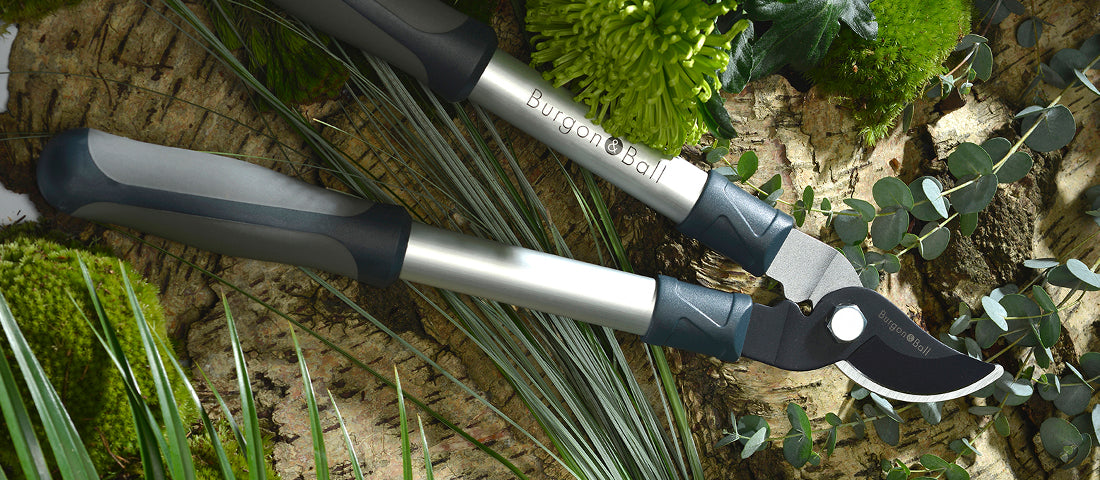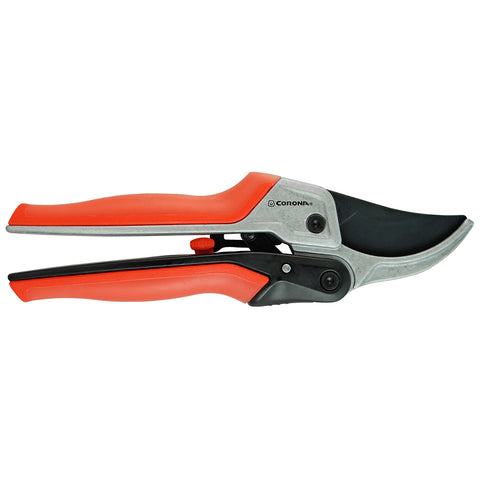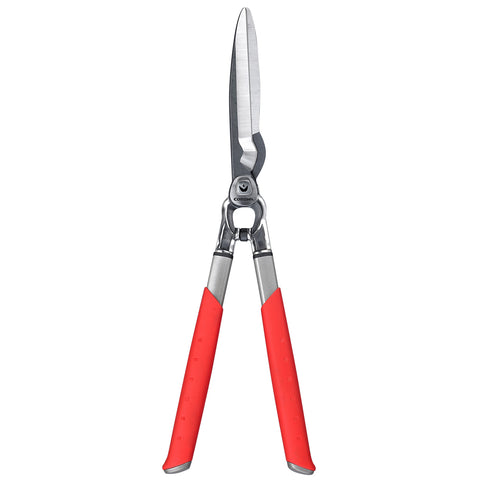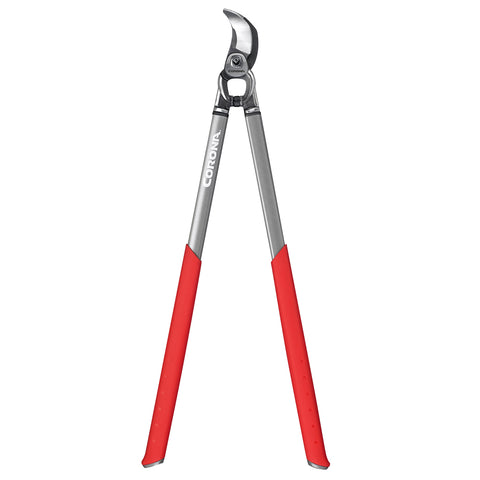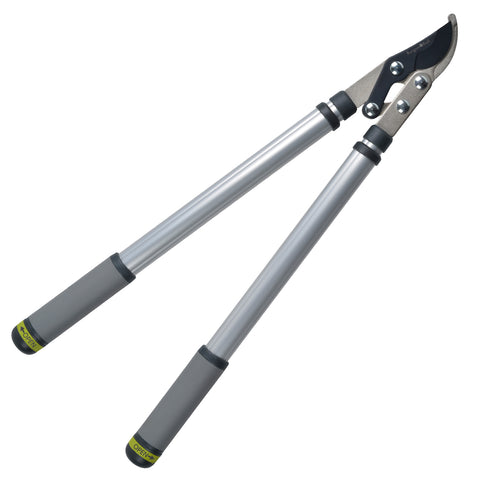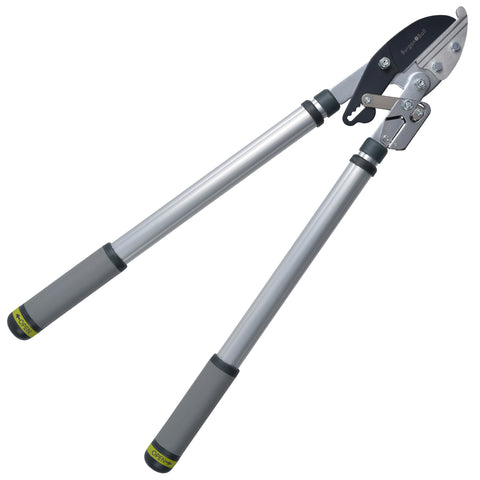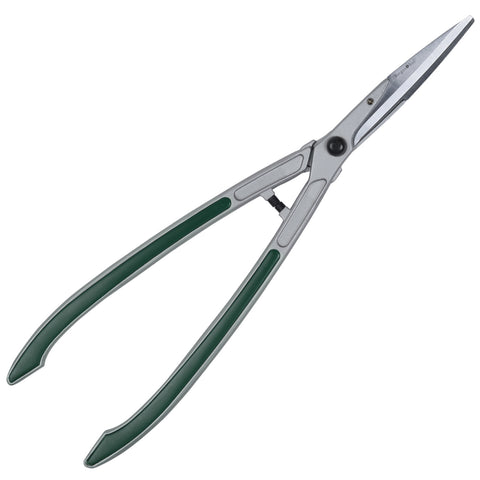When you’re looking at choosing a lopper or shear, which is the right cutting tool for you? To help out, here’s our quick guide to which tool to choose for some common cutting jobs around the garden.
We've put a glossary of cutting tool terms at the end of this blog, so if you're not sure about any of the terminology we use here, do check that out.
In addition to our much-loved RHS-endorsed ranges, you'll notice we refer below to tools from our US sister company Corona Tools, based in the city of Corona, California. The company been there a long time, making reliable, high performance cutting tools. Its heritage goes back to 1928, when the founders started making a small clipper used to snip the oranges from the trees of the California orange groves. You can read more about our sister company and how this tiny clipper revolutionised America’s citrus industry here.
So, let's get down to the nitty-gritty.
Which cutting tool do I need?
It all comes down to the million-dollar question: what are you cutting?
This is not about ‘How big is the plant you are cutting?’ Instead the question is ‘Is the plant you are cutting dead or alive?’
The choice of cutting tool comes down to the question of whether preserving the health of the plant is important. Most of the time for gardeners, plant health is paramount. Keeping the plants in your garden not only alive but happy, healthy and thriving, is what gardening’s all about.

- If the plant is alive, whether flower, shrub or tree, you want to select a bypass action tool, or a scissor action tool.
- If plant health isn’t a big worry with what you’re cutting – for example, if you’re cutting dead wood – an anvil action tool is the one for the job.
Bypass or anvil – what’s the difference?
Scissor action is a fairly familiar description; the tool has two long sharp blades moving against each other to complete the cut. But 'bypass' and 'anvil'? What do these terms mean?
It’s all about how the tool’s sharp blade cuts down onto the anvil, which forms the lower ‘jaw’ of the tool’s cutting area. The anvil (also called a cutting block, or sometimes a hook) supports the material which is being cut, holding it steady while the blade cuts down as the tool closes.
In a bypass action tool, the blade moves past the anvil, bypassing it to one side as it completes the cut:

This slicing action gives a very precise, clean cut, making bypass action tools the ideal choice for cutting any living plant material. The clean cut minimises the chance of crushing the stem, which can leave a plant vulnerable to infection. Jump to more information on bypass action tools.
In contrast, with an anvil action tool, the blade cuts down directly onto the anvil:

Read on for more information on bypass and scissor action tools to make cuts on living plants. If plant health isn’t a key concern in what you’re cutting, you can jump straight to the section on anvil action tools here.

What kind of jobs are Bypass action tools useful for?
Bypass action tools make clean precise cuts on living plant material, so they're ideal for cutting through branches or stems when pruning.
Pruning a living tree or shrub This might be for maintenance, to tidy the growth – perhaps cutting back in the autumn to reduce the chance of damage from winter gales. Or in late winter/early spring, you may want to prune a tree or shrub to shape or rejuvenate it; cutting out a main stem will encourage side shoots to form, giving a bushier, more compact shape. You may have a young tree or shrub which you want to train into a certain shape as it grows; this is called ‘formative’ pruning, and again, is best done in the late winter or early spring.
For pruning work, you might look at our loppers collection here, perhaps the Burgon & Ball RHS-endorsed telescopic bypass lopper or the Burgon & Ball RHS-endorsed mini lopper. These are ideal for the keen gardener, with a ten-year guarantee against manufacturing defects. You’ll also see several Corona options in our loppers collection. The Corona Comfort Gel tools are ideal for keen domestic gardeners, with soft-grip handles, a variety of clever features for extended reach or enhanced cutting power, and a ten-year guarantee. The Max Forged Corona loppers are incredibly hardwearing, using drop forged steel to create tools which will last a lifetime of heavy or professional use.
Of course, if the shrub you’re pruning is small and has narrow stems, a lopper might be too big to use properly, and a smaller bypass action hand pruner or secateur might be useful. You can find our guide to our secateurs, pruners and garden scissors here.


What sort of jobs are Scissor action tools useful for?
These tools are useful for cutting leaves and other soft green growth; trimming hedges, and shaping topiary are perfect examples.
Trimming a hedge or shaping topiary Trimming this living soft green growth requires a scissor action shear with a longer blade to trim a larger area in one pass, rather than picking out single stems. These specialised hedge or topiary shear uses two blades moving against each other to make the cut. Just a word of warning; don’t try to use a hedge shear to cut through any thicker stems you come across as you cut. Instead, switch to a bypass action secateur, or even a bypass action lopper for very thick stems.
You’ll find a variety of hedge shears in our hedge shear collection. The Burgon & Ball RHS-endorsed hedge shears are ideal for keen gardeners, with a variety of features and a ten-year guarantee against manufacturing defects. The Burgon & Ball RHS-endorsed wavy-edged hedge shear, for example, is especially suited to trimming high hedges, as the wavy edges of the blade catch the growth to be cut as you work overhead. You’ll also see several Corona options in our hedge shears collection. The Corona Comfort Gel tools are ideal for keen domestic gardeners, with soft-grip handles, a variety of clever features for extended reach or enhanced cutting power, and a ten-year guarantee. The Corona Max Forged hedge shear is incredibly hardwearing, using forged steel to for edge retention, ready for a lifetime of heavy or professional use.

What sort of jobs are Anvil action tools useful for?
Anvil action loppers and secateurs are useful for any cutting where making a clean cut for good plant health isn’t a concern. Jobs for anvil loppers might include:* Removing dead wood from a tree or shrub
* Thinning brush, brambles or overgrown areas
* Shortening a long or heavy branch from a living tree, ready for precision removal with a bypass action tool
In all of these cases, maintaining plant health is less important than simply removing the growth, so the powerful anvil action is ideal. Use anvil action tools for doing the donkey-work of any cutting job, and save the bypass action tools for the precision cuts.
We offer less variety in our anvil action tools, but you’ll find them in our loppers collection and also in our secateur collection. Our Burgon & Ball RHS-endorsed ratchet pruner is a useful tool; it’s an anvil action pruner for single-handed use like a secateur, but the ratchet anvil action means it offers far more cutting power. There’s also a ratchet anvil pruner in the Corona range too, with a four-stage ratchet mechanism.
We hope you’ve found our guide to large cutting tools useful. When you’re choosing the right tool for the job, simply remember that the first question is always: ‘What are you cutting – dead or alive?’
What does it mean? Our guide to cutting tool terminology

